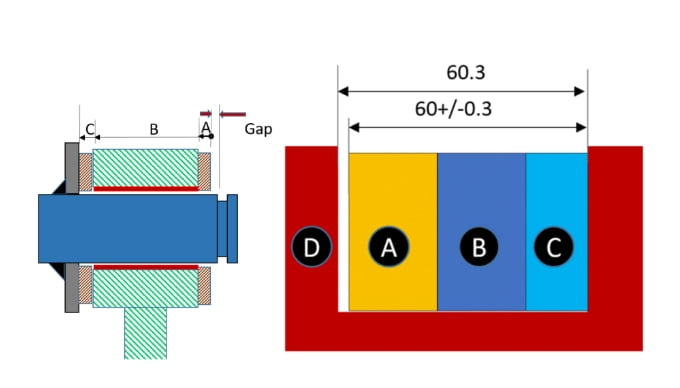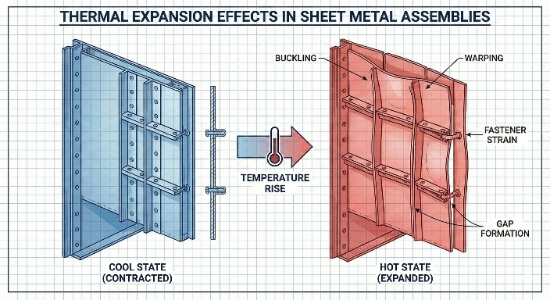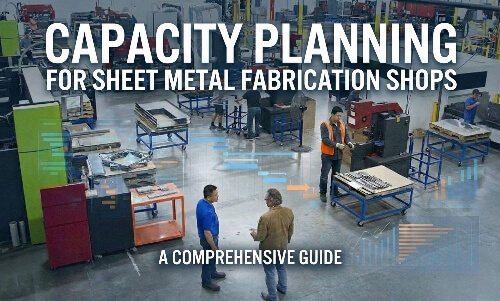Many manufacturing projects are plagued by production delays, assembly issues, and quality problems. Each component in your assembly might meet its tolerances, yet the final product fails to fit together. This common challenge adds unexpected costs and wastes valuable time. The solution lies in mastering tolerance stacking analysis early in your design process.
Tolerance stacking occurs when individual part variations combine to affect the overall assembly. Think of it like a chain reaction – small dimensional variations in each part add up through the assembly sequence. Smart tolerance analysis prevents these issues before they reach production.
The methods I’ll share come from real manufacturing experience. They’ll help you catch potential assembly problems before they happen and save time and money.
What is Tolerance Stacking or Stack-Up?
Tolerance stacking refers to accumulating individual part tolerances when multiple components are assembled. Each part may have slight deviations from its intended dimensions, but these variations can lead to significant errors in the final product.
This can lead to misalignment, poor fit, or even failure of the final product. Think of it like stacking blocks—if each block is slightly off, the whole stack becomes unstable.
Precision in assembly ensures that parts fit and function as intended. Even minor deviations can cause big problems, especially in complex systems. You can avoid costly rework, delays, and product failures by managing tolerance stacking.
The Mechanics of Tolerance Stacking
Understanding tolerance stacking is important for designing parts that fit together correctly. Tolerance stacking occurs when small variations in each part’s dimensions add up.
How does Tolerance Stacking affect assembly Fit?
At first, small differences in part dimensions may seem unimportant. But when you put several parts together, these small variations stack up.
For example, when assembled, two parts with a tolerance of ±0.1mm can result in a total variation of ±0.2mm. This could cause parts to misalign, affecting the overall fit and function.
The Role of Tolerances in Ensuring Part Compatibility
Tolerances set the acceptable limits for how much a part’s dimensions vary. They help ensure that parts will fit and work together correctly.
Positional Tolerances
Positional tolerances define how much a feature, like a hole, can shift from its intended position. If a hole is slightly off-center, the positional tolerance limits how far it can move while still allowing the parts to fit together.
Dimensional Tolerances
Dimensional tolerances control a part’s size, such as its length, width, or diameter. These tolerances specify the allowable limits for how much a part’s dimensions vary. Parts may not fit together properly if the dimensional tolerance is too loose.

Methods of Tolerance Stack Analysis
Tolerance stack analysis helps engineers predict how part variations affect the final assembly. There are two main methods: Worst Case Tolerance Analysis and Statistical Tolerance Analysis. Both methods aim to manage how part tolerances combine but differ in their approach.
Worst Case Tolerance Analysis
The Worst Case Tolerance Analysis is simpler. It assumes that each part feature will be at its maximum allowable deviation. This creates a “worst-case scenario” where the variations are as large as possible.
While this is unlikely to happen in real production, it provides a safety net. It ensures that the parts will fit together even in the worst case.
The worst-case method benefits from guaranteeing the parts will meet the required fit. However, it requires tighter tolerances, which can be costly.
Example of Worst Case Tolerance Analysis
Let’s look at a simple example. Suppose four parts (A, B, C, D) are stacked in an assembly, each with its dimension and tolerance. We sum the individual tolerances to find the assembly’s total tolerance.
| Element | Nominal | Tolerance |
|---|---|---|
| A | 8 | ±4 |
| B | 5 | ±2 |
| C | 5 | ±2 |
| D | 5 | ±2 |
| Assembly (X) | 23 | ±10 |
In this case, the total tolerance for the assembly is X = 23 ± 10. This is calculated by adding the tolerances of each part, assuming they are at their extreme ends.
Statistical Tolerance Analysis (RSS – Root Sum Squared)
Statistical Tolerance Analysis takes a more realistic approach. Instead of assuming every feature is at its maximum deviation, it uses statistics to calculate the probability of how parts will vary.
This method assumes that not all features will be at their extremes. Some will be closer to the nominal size, while others will vary more.
One common approach in statistical tolerance analysis is Root Sum Squared (RSS). It assumes that the deviations follow a normal distribution. The RSS method adds up the tolerances to account for these variations rather than just assuming the worst-case scenario.
Example of RSS Tolerance Analysis
Let’s use the same example with a nominal dimension of 23. We will now calculate the tolerance using the RSS method.

| Element | Nominal | Tolerance |
|---|---|---|
| A | 8 | ±4 |
| B | 5 | ±2 |
| C | 5 | ±2 |
| D | 5 | ±2 |
| Assembly (X) | 23 | ±5.29 |
Using the RSS formula, the total tolerance for the assembly is X = 23 ± 5.29. This is a more realistic expectation, accounting for the fact that not all variations are at their maximum.
Best Practices for Effective Tolerance Stacking
When designing parts for assembly, it’s important to manage tolerance stacking effectively. A few key practices can help prevent these problems and ensure parts fit together as intended.
Avoid Over-Dimensioning Your Part
Over-dimensioning occurs when a part has more tolerances than necessary. This can lead to unnecessary complexity in manufacturing.
Avoid adding too many tolerances, as it can increase the risk of errors during production. Focus on critical features that directly affect the fit and function of the part.
Evaluate Your Tolerance Stack’s Sensitivity
Not all parts are equally sensitive to variations in tolerance. Some features impact the overall fit and function more than others. It’s important to evaluate which features in your design will be most sensitive to dimensional variations.
Consider Post-Manufacturing Changes
Tolerance stacking can be affected by post-manufacturing processes such as machining, welding, or coating. These processes can alter the dimensions of parts after they are produced.
When designing for assembly, consider how these changes might affect the final fit. Plan any adjustments needed after the parts are made to ensure proper assembly.
Adhere to General Tolerance Best Practices
General tolerance best practices help ensure the tolerances are appropriate for the specific manufacturing process and part design. To keep things simple, always use standardized tolerances whenever possible.
Be mindful of the chosen manufacturing method (e.g., laser cutting, CNC machining) and its typical tolerances. To prevent complications, ensure that your tolerance specifications are within the capabilities of your production processes.
Make Clear and Defined Drawings
Clear and precise drawings are key to communicating tolerances correctly. Ensure that all tolerances are well-defined and easy to understand. Ambiguity in drawings can lead to mistakes in production.
Always include all relevant dimensions and tolerances, and avoid unnecessary complexity. Simple, clean drawings will help ensure that parts are made to the correct specifications, reducing the risk of errors due to misinterpretation.
Tools for Tolerance Stack-Up
Leverage tools like CAD software and tolerance analysis programs to simulate and analyze tolerance stacks. These tools help you visualize potential issues and optimize your designs before production.
Conclusion
Tolerance stacking is critical in ensuring parts fit and function as intended. Understanding variations’ mechanics and using worst-case and statistical analysis methods can help predict and manage them effectively.
Need help optimizing your designs and reducing manufacturing risks? Contact us today to discuss how we can help with your tolerance stack analysis and ensure your parts fit perfectly. Let’s make your next project a success!
Hey, I'm Kevin Lee

For the past 10 years, I’ve been immersed in various forms of sheet metal fabrication, sharing cool insights here from my experiences across diverse workshops.
Get in touch

Kevin Lee
I have over ten years of professional experience in sheet metal fabrication, specializing in laser cutting, bending, welding, and surface treatment techniques. As the Technical Director at Shengen, I am committed to solving complex manufacturing challenges and driving innovation and quality in each project.




